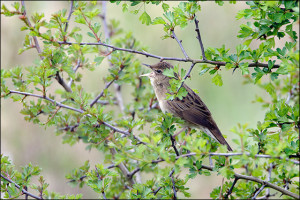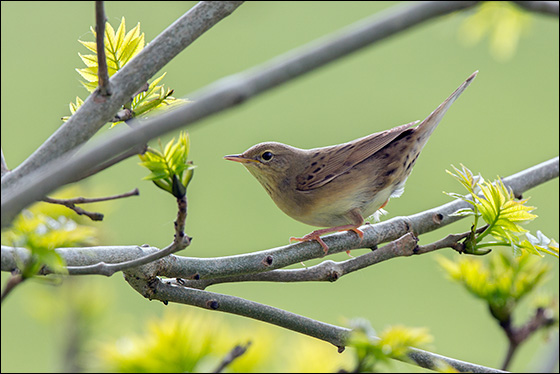Grasshopper Warbler (Locustella naevia)
The only time Grasshopper Warblers are easily detectable is when they are singing. The males like to perform from higher above ground than they would normally go in the course of their foraging lives, so they often use the side-branch of a low bush, or even the top, as a singing post. The song is a reeling sound, like that of an angler bringing in a catch, or like a freewheeling bicycle. Consisting of double-notes repeated at the astonishing speed of 26 per second, it is easily blown away by any breath of wind, and when singing the birds have a habit of turning their heads around, so to an observer it would appear that the strength of the signal varies. The song may be heard at any time of the day or night.
When a female approaches the territory of a male, Grasshopper Warblers throw off the shackles of their retiring life for a while and indulge in a spirited chase, often accompanied by excited singing. Male pursues female vigorously, and he may even fly around her in a low, silent display-flight, using moth-like wing-beats. When on a perch he may flap his wings in a slow and exaggerated manner, a display known as wing-waving, and he may also perk up all his efforts by carrying a leaf as well, which may be passed to the female. Mating takes place on or near the ground.
Grasshopper Warblers have a widespread distribution in Northern and Central Europe. Their habitat of dense, low growth is not shared with many other species. Recent evidence suggests that, at least on the edge of their range, Grasshopper Warblers may be partly nomadic, their distribution being affected by spring temperatures and the presence or absence of warm easterly winds.


